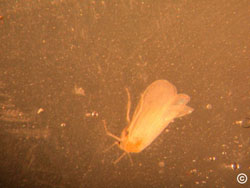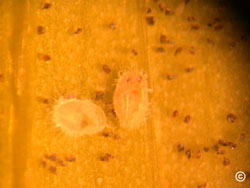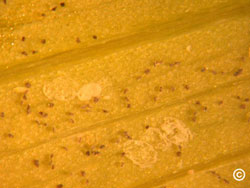
What is a greenhouse whitefly?
The greenhouse whitefly is a common pest of houseplants and greenhouse plants. This insect has a host range of more than 250 ornamental and vegetable plants, including the poinsettia, begonia, hibiscus, aster, cucumber, tomato, grape and bean.
What do greenhouse whiteflies look like?
Adult whiteflies are white and fly in a weak, random manor. Adult females typically lay eggs on the newest leaves. Nymphs emerge in five to seven days and flatten themselves against the leaf to feed. They suck sap from the plant, stunting growth and causing the leaf to yellow or drop and a general decline of plant vigor. A sooty mold can grow on the foliage of plants from sticky honeydew excreted by whiteflies.
How can I control greenhouse whiteflies?
Whitefly control outdoors is not necessary in Colorado; they do not cause enough damage and they cannot survive the winter. Indoors or in greenhouses, however, whitefly control is necessary. The immature stages of the insect are inconspicuous and easily overlooked. The nymphs are translucent and do not move from their feeding area. Preventing outbreaks by not bringing infested plants inside is the best management tool. Whiteflies are resistant to most traditional pesticides. Infested plants in a greenhouse should be discarded. Yellow and white sticky traps placed above host plants can either monitor or help control whitefly populations. Parasitic wasps also are used as biological controls against whitefly. Insecticides effective against whitefly nymphs include horticultural oils, neem-based chemicals and insecticidal soaps. Some plants, however, are sensitive to soaps. Pyrethrins and related pyrethroid insecticides are the best controls for adults.

For more information, see the following Colorado State University Extension fact sheet(s).



